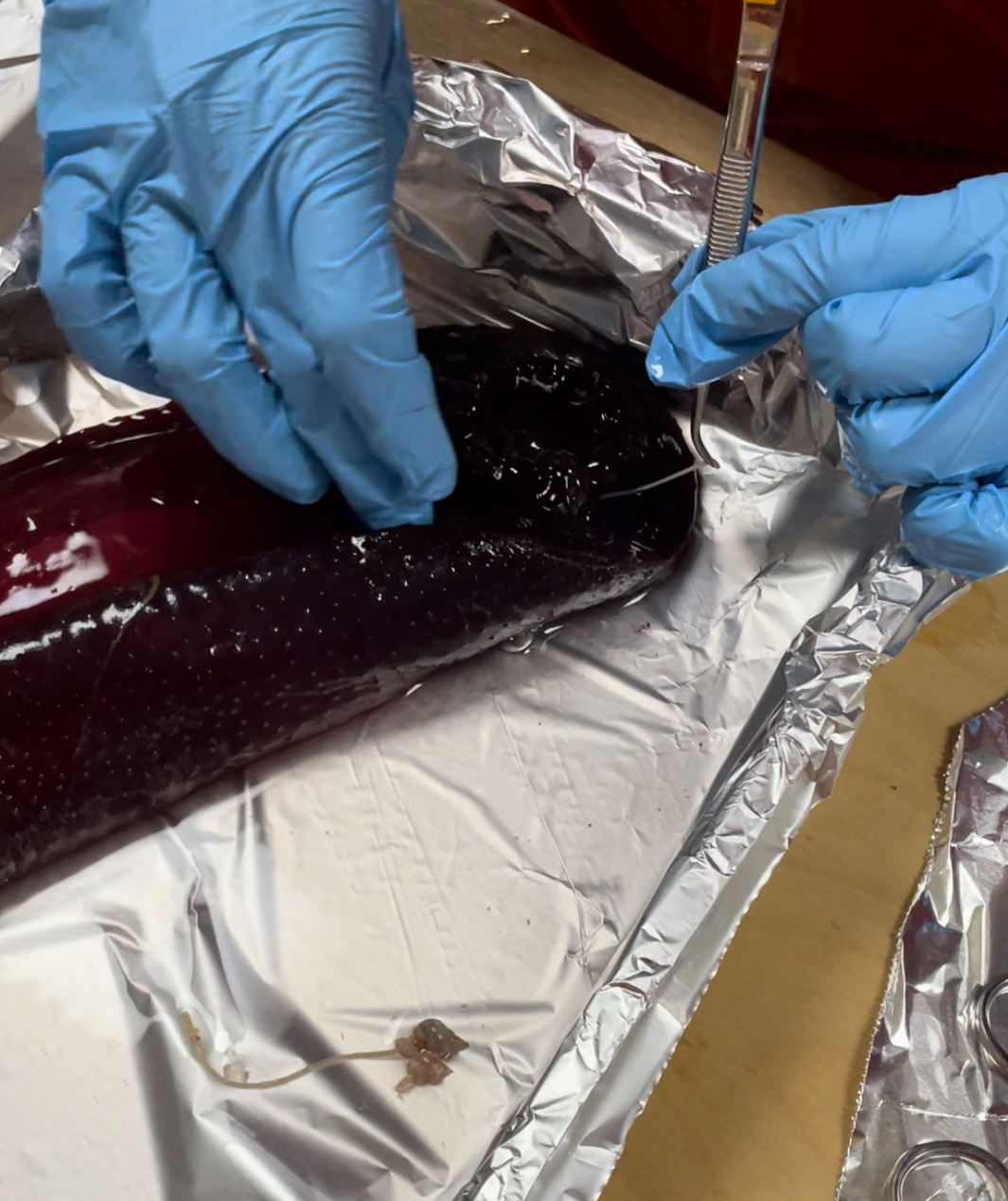Sitting in the ROV van watching the ISIS float effortlessly above the seabed approximately 4 km deep in the North Pacific seems a far cry from my little flat in Clapham, but when the opportunity to join the SMARTEX 2024 cruise surfaced, I was in.
As a first timer, I spent the next 4 months grilling my colleagues for their top tips and best buys, whilst humble bragging to my friends and family that sadly my job requires me to jump on a plane to Costa Rica and head out to sea for 7 weeks.
I was often confronted with questions like, “do you get sea sick?”, “have you been on a cruise before?” or “do you know everyone going?”… valid questions, to which the answers were, “I don’t know”, “no” and “no”…but honestly, they seemed fairly irrelevant. It had been a bit of a dream to get on a cruise and in my opinion, the fact that these hadn’t really crossed my mind, was a good sign.
During my Oceanography MSc, I volunteered for Tammy Horton, curator of the Discovery Collections at the National Oceanography Centre. I was tasked with logging a deep-sea siphonophore collection and helping to process megafauna from a Discovery cruise. The feeling of holding an animal found over 4 Km deep is a phenomenal privilege, one that can’t imagine I’ll ever get tired of. It feels insane that I am now interacting with these creatures on a daily basis.

As part of the bio-sampling team, our job is largely to process the biology from meio- to megafauna brought up from depths of >4 000 m in an area called the Clarion Clipperton Zone, an abyssal plain famed for its abundance of nodules. SMARTEX is aiming to gather a better understanding of the ecological baseline and how it may differ over space and time. The bio-sampling team focusses on processing box cores and mega fauna collected by the ROV (remotely operated vehicle) as well as preserving and slicing sediment from push cores and mega cores for further analysis of meiofauna and microbiology onshore.
There is no denying, it’s hard work. After a long transit to the research site, it’s 12 hour shifts ~30 days in a row and especially for those of us who are new to the protocols, a bit of a baptism of fire. But after hours of sieving, siphoning, slicing and live sorting, you get to hold something that has never seen sunlight, has lived most of its life under immense pressure in an environment largely untouched by humans. Most striking is the colour, from the deep reddy-purple Benthodytes sea cucumber and glowing bioluminescent Umbellula sea pen to the bright orange of a brisingid sea star. Then you begin to look closer, for example the Psychropotes sea cucumber is slightly spiky and rough on its dorsal side, versus the smooth ventral muscles that power the animal along the seabed. Even closer and you can see the internal organs of the more translucent specimens, eggs or in a recent case, a parasitic snail which burrowed 4 cm into the mouth parts of a Benthodytes sea cucumber.

And whilst this is all incredible, team culture is crucial to enjoying the work and feeling motivated to keep going. If you were to pop your head into the deck lab, you would most likely see us debating the hot topic of each other’s most suitable wrestling names, listening to latin (the best for microscopy), rock (the best for sieving) or EDM (the best for an energy boost) and coming up with thought-provoking questions such as, would you rather have fins for arms or only be able to eat algae for the rest if you life?…
Overall, it has been an awesome experience so far, I can’t wait to see what the next few weeks has in store and I can safely say I have got the bug.
Finally, some “must haves” for any first-time cruisers:
- Dreading the prospect of a few sea sickness horror stories I’d heard I was kitted out with a patch, wrist band, medication and pregnancy nausea sweets that my sister in law swears by…turns out, I don’t really get sea sick, but still essentials I wouldn’t risk going without.
- I added thick rubber insoles to my steel-toe boots, amazing for spending hours on your feet.
- Fairy lights: a lovely way to brighten up your cabin and have lighting other than the very bright LEDs.
- Treats! It’s a great comfort knowing that my Percy Pigs and Dairy Milk are there for when a shift has been especially demanding.
- A water proof speaker: processing a box core is a damp and muddy affair, a water proof speaker has been brilliant for blasting some motivational Natasha Bedingfield.
- A spare change of coveralls: because putting on damp coveralls at 1 am is not the one.
- Crocs: they cover your toes so less of a safety hazard and they’re so comfortable to put on after being in steel toe boots.
- The best advice by far was buying a cheap sunlight alarm clock, since I would be working on the night shift (midnight to noon), the gradual brightening up of my cabin at 23.00 makes an amazing difference to how I feel when I wake up.
Things I wish I had:
- Shorts with pockets: as we all know ladies shorts aren’t known for their tool carrying ability, so I’m feeling very jealous of all the boys.
- Warm clothes: I had completely forgotten about the cold temperature lab. Processing all the mega fauna takes time, and dunking your hand in cold seawater tanks adds to the already chilly 7 C.
- More Percy Pigs: a rookie error.